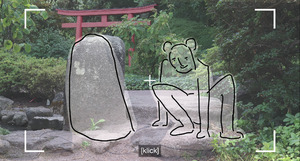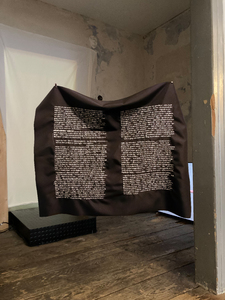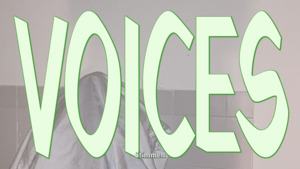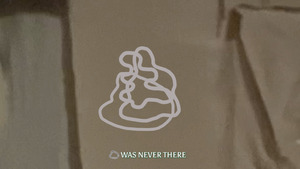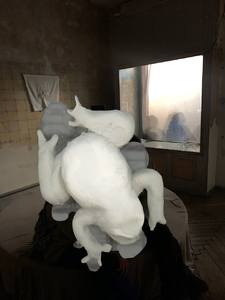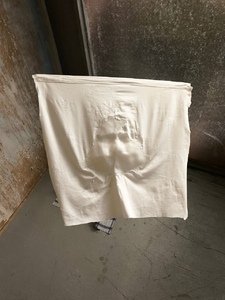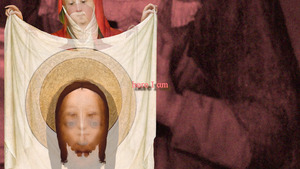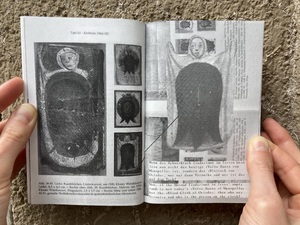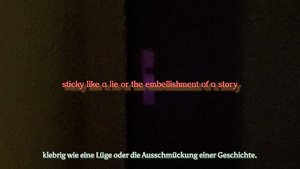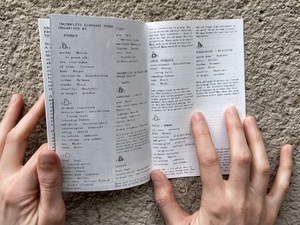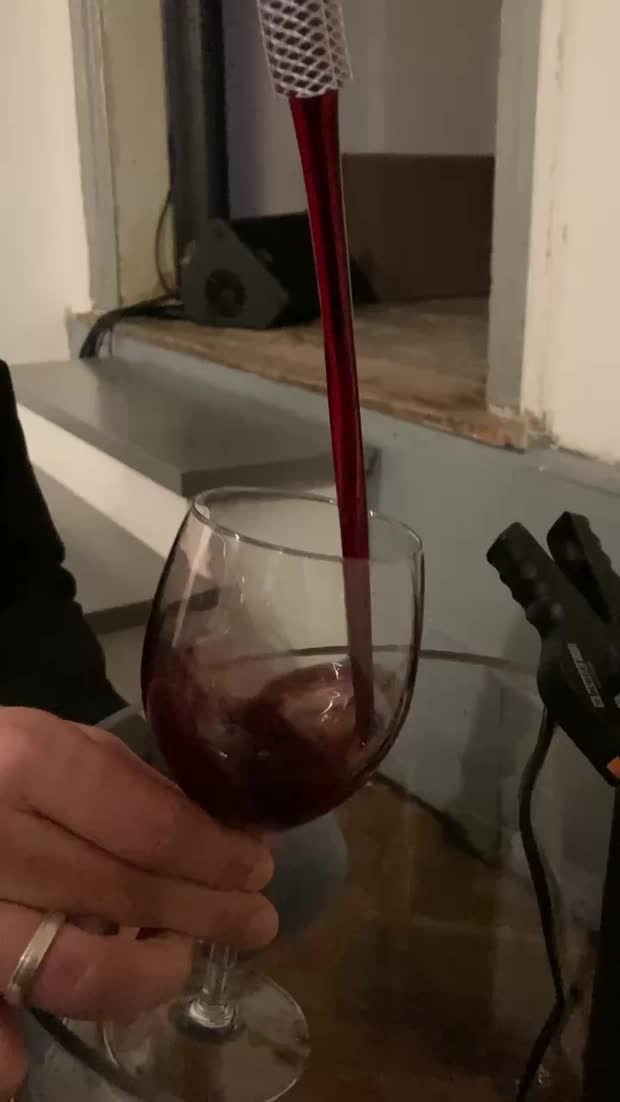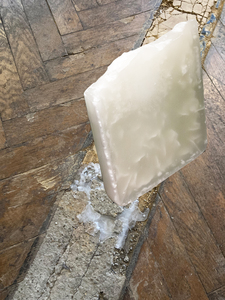Hanne König
| Name | Hanne König |
122 Inhalte
- Seite 1 von 11
Prolog: Im Zoo
- Titel
- Prolog: Im Zoo
- Titel (en)
- Attempts to rewrite
- Untertitel des Projekts/Werks (en)
- Exhibition with three video works: On the way to the station, Prologue: In the zoo, Germania Girl - Concert in the castle!
- Autor/in
- Beschreibung (de)
- Obszön, nerdy und aus Japan: Anime im Fernsehen zu schauen galt in vielen Haushalten in Deutschland als verrufen. Diese Rezeption von Anime entspricht zugleich den exotisierenden Stereotypen, die der (vorgeblich gesittete) Westen auf Japan projiziert. In ihrer Diplomarbeit nutzt Miki Feller Anime als Medium, um über anti-asiatischen Rassismus zu sprechen. Entstanden sind drei Videoarbeiten, die sie in ihrer Ausstellung „Versuche zu überschreiben“ gezeigt hat. Jedes Video erzählt eine eigene Geschichte, die in Karlsruhe spielt, unter anderem am Bahnhof, am Zoo und am Schloss. Es sind Versuche, eine vorherrschend weiße Umgebung zu beschreiben, sich dazu zu positionieren und davon zu distanzieren.
Die Videos wurden in Zusammenarbeit mit folgenden Personen realisiert und ausgestellt: „Versuche zu überschreiben“ mit Max Mandery (Dramaturgische Beratung), Bruno Jacoby (Grafik), Leia Walz (Ausstellungsgestaltung), Jaya Demmer (Textil), Johannes Thimm und Lina Determann (Rampe) / „Auf dem Weg zum Bahnhof“ mit Bruno Jacoby (Grafik) / „Prolog: Im Zoo“ mit Sophia Stadler (Storyboard, Schnitt & Fotos) / „Germania Girl – Konzert im Schloss!“ mit Max Mandery (Dramaturgische Beratung), Bruno Jacoby (Grafik), Yun-Wen Liu (Fotos & Farbkorrektur), Vanessa Bosch (Musik), Ricarda Fischer (Musik & Sounddesign), Meret Bhend und Paulina Mimberg (Farbkorrektur), Luise Peschko (Dialog Editing) sowie Nele Faust, Alejandra Janus, Melanie Berner, Rita Andrulyte, Nini Lü, Jörg Stegmann, Laura Haak und Josefine Scheu (Stimmen).
- Obszön, nerdy und aus Japan: Anime im Fernsehen zu schauen galt in vielen Haushalten in Deutschland als verrufen. Diese Rezeption von Anime entspricht zugleich den exotisierenden Stereotypen, die der (vorgeblich gesittete) Westen auf Japan projiziert. In ihrer Diplomarbeit nutzt Miki Feller Anime als Medium, um über anti-asiatischen Rassismus zu sprechen. Entstanden sind drei Videoarbeiten, die sie in ihrer Ausstellung „Versuche zu überschreiben“ gezeigt hat. Jedes Video erzählt eine eigene Geschichte, die in Karlsruhe spielt, unter anderem am Bahnhof, am Zoo und am Schloss. Es sind Versuche, eine vorherrschend weiße Umgebung zu beschreiben, sich dazu zu positionieren und davon zu distanzieren.
- Beschreibung (en)
- Obscene, nerdy, and from Japan: In many German households, it was forbidden to watch anime on television. This perception of anime mirrors the exoticizing stereotypes projected onto Japan by the (allegedly civilized) West. In her diploma project, Miki Feller addresses anti-Asian racism in Germany by using anime as the medium. She created three video works and showcased them in the exhibition “Versuche zu überschreiben.” Each video tells a story set in Karlsruhe, for example, at the train station, the zoo, and the castle. These videos serve as attempts to describe a predominantly white environment, to position oneself in relation to it, and to distance oneself from it.
The videos were created and presented in collaboration with the following people: "Versuche zu überschreiben" with Max Mandery (dramaturgical consultation), Bruno Jacoby (graphics), Leia Walz (exhibition design), Jaya Demmer (textile), Johannes Thimm and Lina Determann (ramp) / "Auf dem Weg zum Bahnhof" with Bruno Jacoby (graphics) / "Prolog: Im Zoo" with Sophia Stadler (storyboard, editing & photos) / "Germania Girl - Konzert im Schloss!" with Max Mandery (dramaturgical consultation), Bruno Jacoby (graphics), Yun-Wen Liu (photos & color grading), Vanessa Bosch (music), Ricarda Fischer (music & sound design), Meret Bhend and Paulina Mimberg (color grading), Luise Peschko (dialog editing) as well as Nele Faust, Alejandra Janus, Melanie Berner, Rita Andrulyte, Nini Lü, Jörg Stegmann, Laura Haak, and Josefine Scheu (voice acting).
- Obscene, nerdy, and from Japan: In many German households, it was forbidden to watch anime on television. This perception of anime mirrors the exoticizing stereotypes projected onto Japan by the (allegedly civilized) West. In her diploma project, Miki Feller addresses anti-Asian racism in Germany by using anime as the medium. She created three video works and showcased them in the exhibition “Versuche zu überschreiben.” Each video tells a story set in Karlsruhe, for example, at the train station, the zoo, and the castle. These videos serve as attempts to describe a predominantly white environment, to position oneself in relation to it, and to distance oneself from it.
- Typ des Projekts/Werks
- Schlagworte
- Mitwirkende
- Dank an
- Sprache
- Technik/Verfahren/Formate
- MP4
- Dauer
- 2 min
- Stadt
- Land
- Titel
- Prolog: Im Zoo
- Urheberrechtshinweis
- © Miki Feller
- Freigabe Nutzung HfG
- Medienersteller/in
- Beziehung/Funktion
- Medien-Beschreibung
- Welche Beziehung haben wir zu unserer Umgebung? Welche Rolle spielt race dabei? Das Video „Prolog: Im Zoo“ zeigt zwei junge, deutsch-asiatische Frauen im Japangarten des Karlsruher Zoos. Sie fühlen sich zunächst unbehaglich, weil sie von ihren weißen Mitmenschen als Teil des Japangartens gelesen werden (könnten). Dann aber inszenieren sie sich – im Angesicht des weißen Blickes – selbst.
"Prolog: Im Zoo" wurde im Rahmen der Ausstellung "Versuche zu überschreiben" gezeigt.
- Welche Beziehung haben wir zu unserer Umgebung? Welche Rolle spielt race dabei? Das Video „Prolog: Im Zoo“ zeigt zwei junge, deutsch-asiatische Frauen im Japangarten des Karlsruher Zoos. Sie fühlen sich zunächst unbehaglich, weil sie von ihren weißen Mitmenschen als Teil des Japangartens gelesen werden (könnten). Dann aber inszenieren sie sich – im Angesicht des weißen Blickes – selbst.
- Medien-Beschreibung (en)
- What relationship do we have with our surroundings? What impact does race have on this? The video "Prolog: Im Zoo" shows two young, German-Asian women in the Japanese garden at Karlsruhe Zoo. They initially feel uncomfortable because of the white visitors, who (may) perceive them as part of the Japanese garden. However, they decide to stage themselves despite the white gaze.
"Prolog: Im Zoo" was shown as part of the exhibition "Versuche zu überschreiben."
- What relationship do we have with our surroundings? What impact does race have on this? The video "Prolog: Im Zoo" shows two young, German-Asian women in the Japanese garden at Karlsruhe Zoo. They initially feel uncomfortable because of the white visitors, who (may) perceive them as part of the Japanese garden. However, they decide to stage themselves despite the white gaze.
- Projektleiter/in
- Semester
- Studiengang
- Typ der Abschlussarbeit
- Importiert am
- 04.03.2024
- Übergeordnete Sets
- 1
about veronica (dt.: über veronika)
- Titel
- about veronica (dt.: über veronika)
- Schlagworte
- Titel
- about veronica (dt.: über veronika)
- Titel (en)
- about veronica
- Urheberrechtshinweis
- © Hanna Franke
- Rechtsschutz/Lizenz
- Freigabe Nutzung HfG
- Beziehung/Funktion
- Alternativ-Text (de)
- Freigestelltes Objekt: Ein schwarzer Stoff, der Falten wirft. Auf den Stoff ist in zwei Blöcken Text mit hellem Garn gestickt. Im Hintergrund ist ein Raum mit einem Vorhang und einer schwarzen Stufe zu sehen.
- Alternativ-Text (en)
- Isolated object: A black fabric with folds. Text is embroidered on the fabric in two blocks with light-colored thread. A room with a curtain and a black step can be seen in the background.
- Projektleiter/in
- Semester
- Studiengang
- Typ der Abschlussarbeit
- Importiert am
- 02.11.2024
- Übergeordnete Sets
- 1
I used to think (dt.: Ich habe immer gedacht)
- Titel
- I used to think (dt.: Ich habe immer gedacht)
- Titel
- I used to think (dt.: Ich habe immer gedacht)
- Titel (en)
- I used to think
- Urheberrechtshinweis
- © Hanna Franke
- Rechtsschutz/Lizenz
- Freigabe Nutzung HfG
- Beziehung/Funktion
- Alternativ-Text (de)
- Über das gesamte Bild der Schriftzug „Voices“ in grün. Am unteren Bildrand steht klein, in heller Schrift: „Stimmen“. Im Hintergrund der Ausschnitt einer Fotografie. Darauf zu sehen ist eine weiße Wand, weiße Kacheln und ein weißes Tuch, das etwas verdeckt.
- Alternativ-Text (en)
- The words “Voices” in green across the entire picture. At the bottom of the picture, in small, light-colored letters, it says: “Voices”. In the background is a detail of a photograph. It shows a white wall, white tiles and a white cloth covering something.
- Projektleiter/in
- Semester
- Studiengang
- Typ der Abschlussarbeit
- Importiert am
- 15.11.2024
- Übergeordnete Sets
- 1
I used to think (dt.: Ich habe immer gedacht)
- Titel
- I used to think (dt.: Ich habe immer gedacht)
- Titel
- I used to think (dt.: Ich habe immer gedacht)
- Titel (en)
- I used to think
- Urheberrechtshinweis
- © Hanna Franke
- Rechtsschutz/Lizenz
- Freigabe Nutzung HfG
- Medienersteller/in
- Beziehung/Funktion
- Alternativ-Text (de)
- Zu sehen sind mittig drei helle Umrissformen. Am unteren Bildrand ist eine wolkenähnliche Form, rechts daneben steht auf Englisch "war nie da". Der Hintergrund ist beige und es sind nur unklare Umrisse zu erkennen.
- Alternativ-Text (en)
- Three bright outlines can be seen in the center. At the lower edge of the picture is a light cloud-like shape, to the right of which is written “was never there”. The background is beige and only vague outlines can be seen.
- Projektleiter/in
- Semester
- Studiengang
- Typ der Abschlussarbeit
- Importiert am
- 31.10.2024
- Übergeordnete Sets
- 1
toad (dt.: kröte)
- Titel
- toad (dt.: kröte)
- Titel
- toad (dt.: kröte)
- Titel (en)
- toad
- Urheberrechtshinweis
- © Hanna Franke
- Rechtsschutz/Lizenz
- Freigabe Nutzung HfG
- Beziehung/Funktion
- Alternativ-Text (de)
- Freigestelltes Objekt: Helle Kröte aus Keramik, die mit einer Schicht Wachs überzogen ist. Im Hintergrund ein dunkler Raum. Ein Stoff hängt an der Wand, Personen sind hinter einer Fensterscheibe zu erkennen.
- Alternativ-Text (en)
- Isolated object: Light-colored ceramic toad covered with a layer of wax. A dark room in the background. A fabric hangs on the wall, people can be seen behind a window pane.
- Projektleiter/in
- Semester
- Studiengang
- Typ der Abschlussarbeit
- Importiert am
- 02.11.2024
- Übergeordnete Sets
- 1
face imprint (dt.: gesichtsabdruck)
- Titel
- face imprint (dt.: gesichtsabdruck)
- Schlagworte
- Titel
- face imprint (dt.: gesichtsabdruck)
- Titel (en)
- face imprint
- Urheberrechtshinweis
- © Hanna Franke
- Rechtsschutz/Lizenz
- Freigabe Nutzung HfG
- Beziehung/Funktion
- Alternativ-Text (de)
- Freigestelltes Objekt: ein heller Stoff mit einem Gesichtsabdruck aus Wachs. Im Hintergrund ist ein Teil einer Fensterscheibe und eine Holzfensterbank zu sehen.
- Alternativ-Text (en)
- Isolated object: a light-colored fabric with a wax face imprint. Part of a window pane and a wooden window sill can be seen in the background.
- Projektleiter/in
- Semester
- Studiengang
- Typ der Abschlussarbeit
- Importiert am
- 02.11.2024
- Übergeordnete Sets
- 1
I used to think (dt.: Ich habe immer gedacht)
- Titel
- I used to think (dt.: Ich habe immer gedacht)
- Schlagworte
- Titel
- I used to think (dt.: Ich habe immer gedacht)
- Titel (en)
- I used to think
- Urheberrechtshinweis
- © Hanna Franke
- Rechtsschutz/Lizenz
- Freigabe Nutzung HfG
- Medienersteller/in
- Beziehung/Funktion
- Alternativ-Text (de)
- Zu sehen ist ein Ausschnitt eines mittelalterlichen Gemäldes der heiligen Veronika. Die weiblich gelesene Person hält ein weißes Tuch vor sich, darauf ist ein Gesicht zu sehen. Es ist überblendet mit dem selben Ausschnitt. Auf diesem ist jedoch ein anderes Gesicht auf dem Tuch abgebildet. Mittig im Bild steht auf Englisch der Text „hier bin ich“.
- Alternativ-Text (en)
- A section of a medieval painting of St. Veronica can be seen. The female figure is holding a white cloth in front of her with a face on it. It is superimposed on the same detail. However, a different face is depicted on the cloth. In the center of the picture is the text “here I am” in English.
- Projektleiter/in
- Semester
- Studiengang
- Typ der Abschlussarbeit
- Importiert am
- 31.10.2024
- Übergeordnete Sets
- 1
everyone (dt.: alle)
- Titel
- everyone (dt.: alle)
- Schlagworte
- Titel
- everyone (dt.: alle)
- Titel (en)
- everyone
- Urheberrechtshinweis
- © Hanna Franke
- Rechtsschutz/Lizenz
- Freigabe Nutzung HfG
- Medienersteller/in
- Beziehung/Funktion
- Medien-Beschreibung
- Doppelseite des Readers zu „I used to think that I was made of Stone“.
(„everyone“, 9,5 x 15,2 cm, 36 Seiten)
- Doppelseite des Readers zu „I used to think that I was made of Stone“.
- Medien-Beschreibung (en)
- Double-page spread of the accompanying reader for “I used to think that I was made of Stone”.
(“everyone”, 9,5 x 15,2 cm, 36 pages)
- Double-page spread of the accompanying reader for “I used to think that I was made of Stone”.
- Alternativ-Text (de)
- Zwei Hände halten ein Heft vor eine Wand. Es zeigt mehrere Abbildungen in schwarz-weiß. Variationen einer Figur mit einem großen hellen Gewand, auf dem ein Gesicht abgebildet ist. Auf der rechten Seite steht unter dem vergößerten Bild der Text: "Wenn das Schweißtuch (sudarium) im leeren Grab Jesu nun nicht das heutige 'Volto Santo von Manopello' ist, sondern das 'Bluttuch von Oviedo', wer war dann Veronika und wer ist das auf dem Tuch?" auf Englisch und Deutsch.
- Alternativ-Text (en)
- Two hands holding a booklet in front of a wall. It shows several illustrations in black and white. Variations of a figure with a large light-colored robe on which a face is depicted. On the right-hand side under the enlarged image stands the text: “Now, If the Shroud (sudarium) in Jesus‘ empty tomb is not today's ’Volto Santo of Manopello‘, but the ’Blood Cloth of Oviedo', then who was Veronica and who is the person on the cloth?” in German and English.
- Projektleiter/in
- Semester
- Studiengang
- Typ der Abschlussarbeit
- Importiert am
- 15.11.2024
- Übergeordnete Sets
- 1
I used to think (dt.: Ich habe immer gedacht)
- Titel
- I used to think (dt.: Ich habe immer gedacht)
- Titel
- I used to think (dt.: Ich habe immer gedacht)
- Titel (en)
- I used to think
- Urheberrechtshinweis
- © Hanna Franke
- Rechtsschutz/Lizenz
- Freigabe Nutzung HfG
- Medien-Beschreibung
- Videostill
- Alternativ-Text (de)
- Videostill: Dunkler verschwommener Hintergrund. In der Mitte des Bildes steht in lachsfarbener Schrift: „sticky like a lie or the embellishment of a story.“ Am Bildrand unten steht in heller Schrift: „klebrig wie eine Lüge oder die Ausschmückung einer Geschichte.“
- Alternativ-Text (en)
- Video still: dark, blurred background. In the middle of the picture, in salmon-colored lettering, it says: “sticky like a lie or the embellishment of a story”. At the bottom edge of the picture, in light-colored lettering, it says: “klebrig wie eine Lüge oder die Ausschmückung einer Geschichte.”
- Projektleiter/in
- Semester
- Studiengang
- Typ der Abschlussarbeit
- Importiert am
- 31.10.2024
- Übergeordnete Sets
- 1
everyone (dt.: alle)
- Titel
- everyone (dt.: alle)
- Schlagworte
- Titel
- everyone (dt.: alle)
- Titel (en)
- everyone
- Urheberrechtshinweis
- © Hanna Franke
- Rechtsschutz/Lizenz
- Freigabe Nutzung HfG
- Medienersteller/in
- Beziehung/Funktion
- Medien-Beschreibung
- Doppelseite des Readers zu „I used to think that I was made of Stone“.
(„everyone“, 9,5 x 15,2 cm, 36 Seiten)
- Doppelseite des Readers zu „I used to think that I was made of Stone“.
- Medien-Beschreibung (en)
- Double-page spread of the accompanying reader for “I used to think that I was made of Stone”.
(“everyone”, 9,5 x 15,2 cm, 36 pages)
- Double-page spread of the accompanying reader for “I used to think that I was made of Stone”.
- Alternativ-Text (de)
- Übersicht verschiedener Worte, kurzer Texte und Symbole. Die deutsche Übersetzung der Überschrift lautet: „Unvollständige Glossarbegriffe, sortiert nach Steinen“.
- Alternativ-Text (en)
- Overview of words, several short texts and signs. The heading says: “Incomplete Glossary Terms organised by stones”.
- Projektleiter/in
- Semester
- Studiengang
- Typ der Abschlussarbeit
- Importiert am
- 15.11.2024
- Übergeordnete Sets
- 1
wine fountain (dt.: weinbrunnen)
- Titel
- wine fountain (dt.: weinbrunnen)
- Schlagworte
- Titel
- wine fountain (dt.: weinbrunnen)
- Titel (en)
- wine fountain
- Urheberrechtshinweis
- © Hanna Franke
- Rechtsschutz/Lizenz
- Freigabe Nutzung HfG
- Medienersteller/in
- Beziehung/Funktion
- Alternativ-Text (de)
- Nahaufnahme eines Weinbrunnens, an dem zwei Gläser mit Rotwein gefüllt werden. Im Hintergrund sind Stufen und eine Soundbox zu sehen.
- Alternativ-Text (en)
- Close-up of a wine fountain where two glasses are being filled with red wine. Steps and a sound box can be seen in the background.
- Projektleiter/in
- Semester
- Studiengang
- Typ der Abschlussarbeit
- Importiert am
- 31.10.2024
- Übergeordnete Sets
- 1
wax and stones (dt.: wachs und steine)
- Titel
- wax and stones (dt.: wachs und steine)
- Titel (en)
- wax and stones
- Urheberrechtshinweis
- © Hanna Franke
- Rechtsschutz/Lizenz
- Freigabe Nutzung HfG
- Beziehung/Funktion
- Alternativ-Text (de)
- Großer freigestellter, heller Wachsblock. Im Hintergrund ist ein Holzboden zu sehen. Mittig verläuft eine Schwelle, teilweise aus Stein und Ton. Der Zwischenraum ist mit Wachs gefüllt.
- Alternativ-Text (en)
- Isolated object: a big block of wax. The background shows a wooden floor. In the middle is a threshold, partly made of stone and clay. The space in between is filled with wax.
- Projektleiter/in
- Semester
- Studiengang
- Typ der Abschlussarbeit
- Importiert am
- 02.11.2024
- Übergeordnete Sets
- 1
